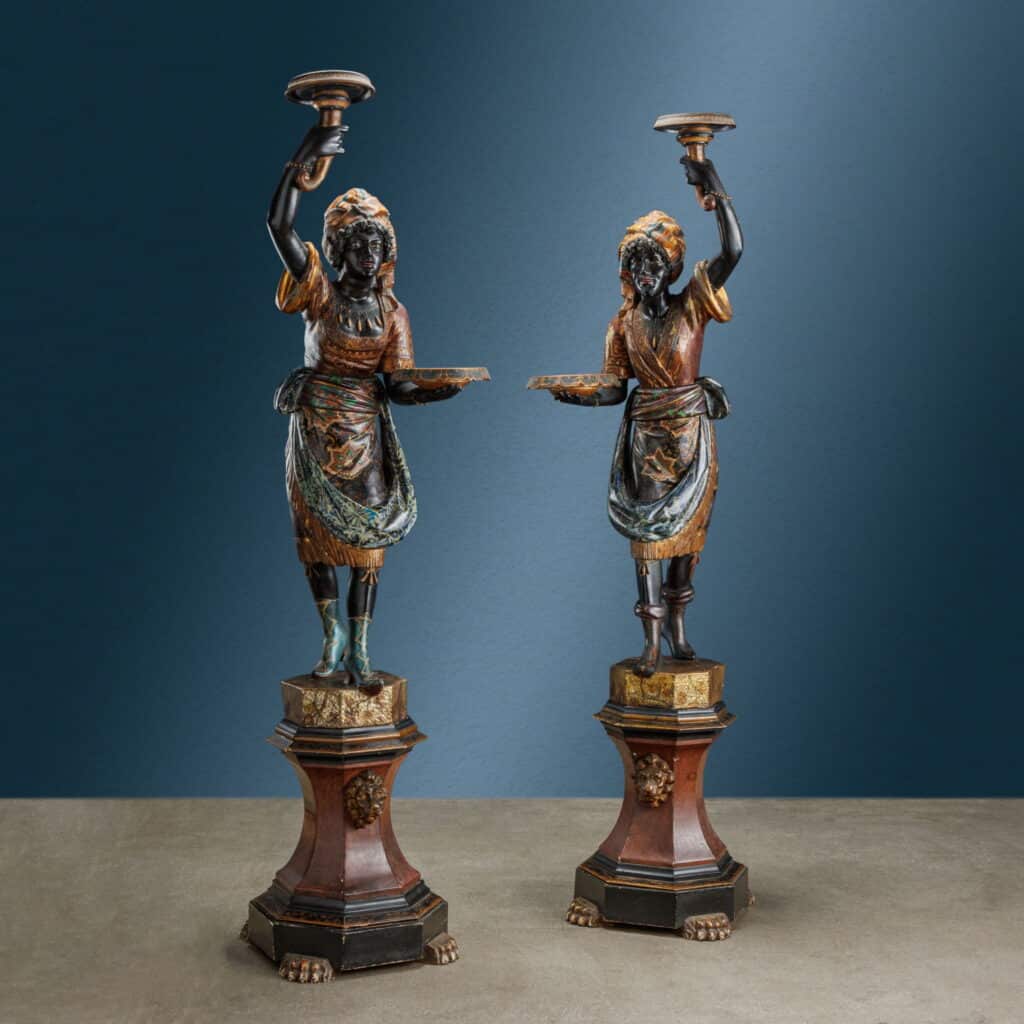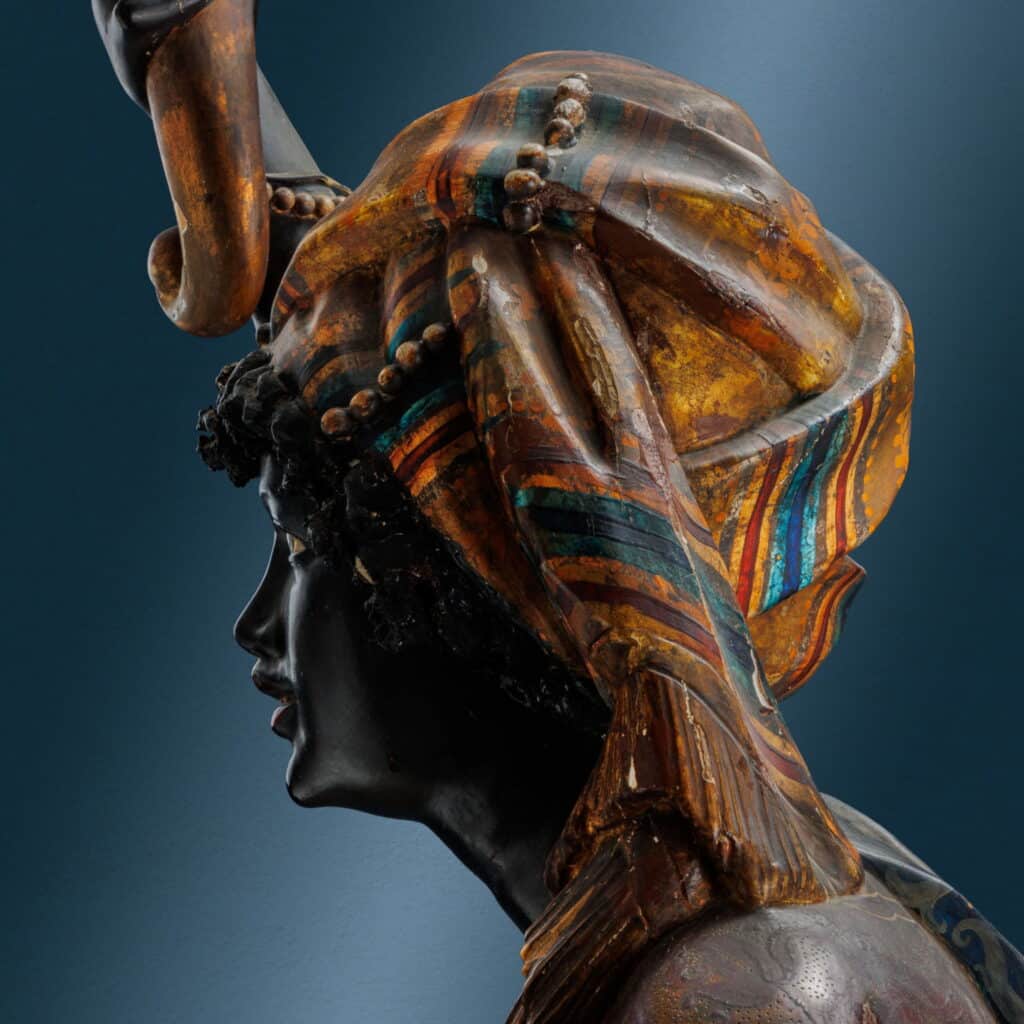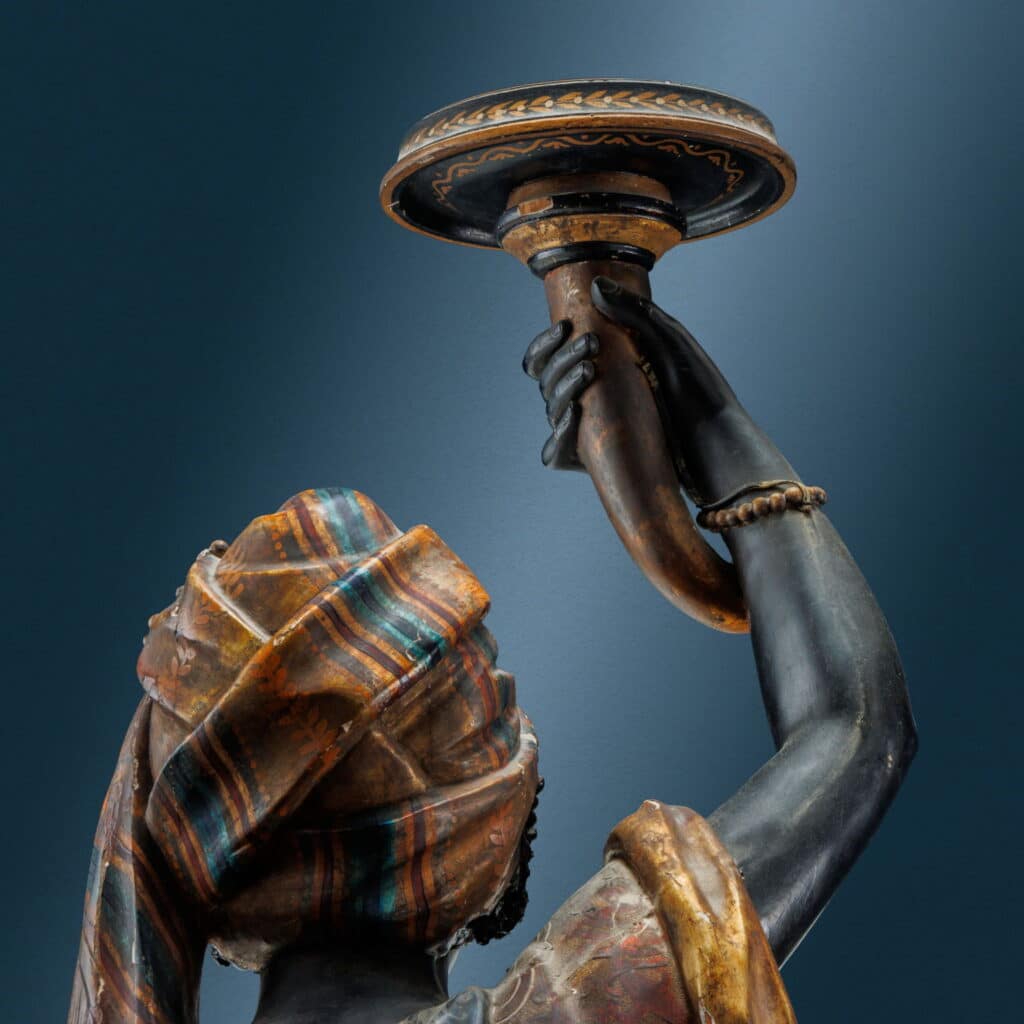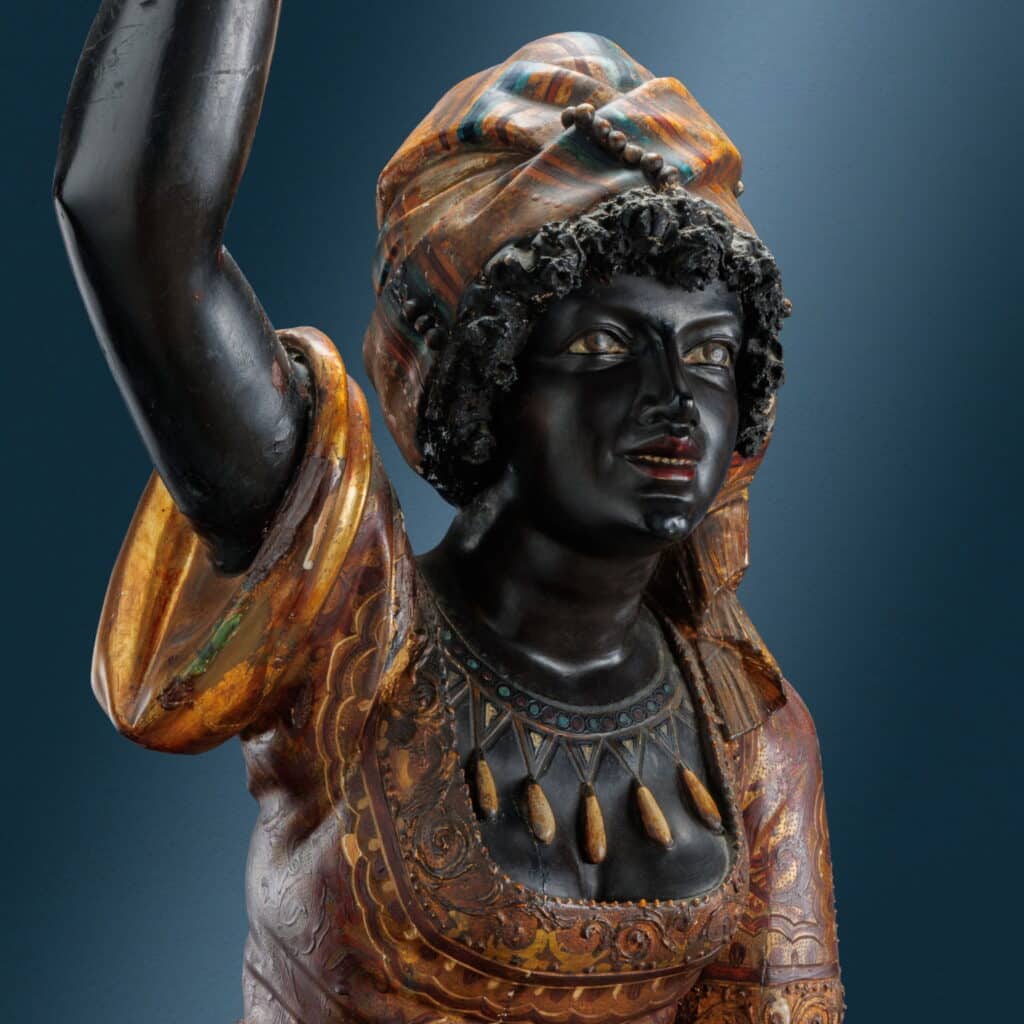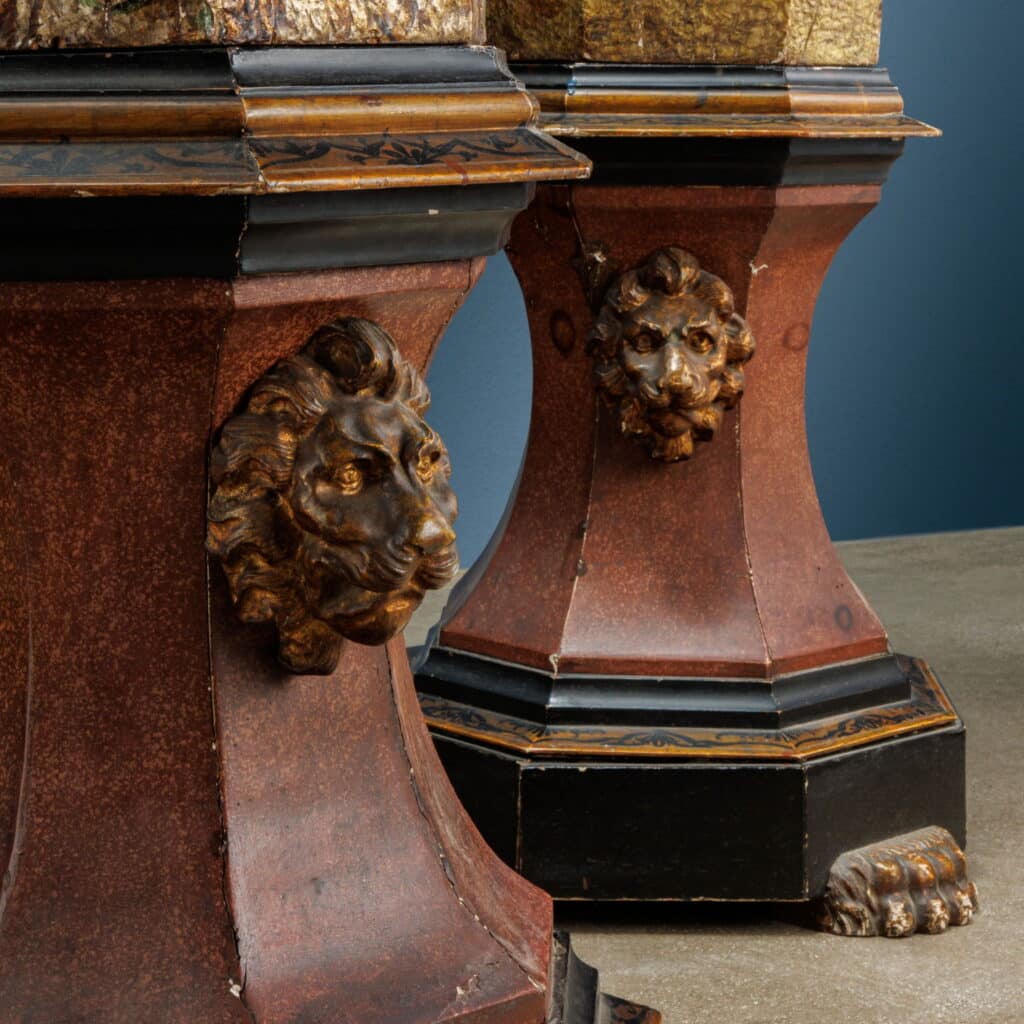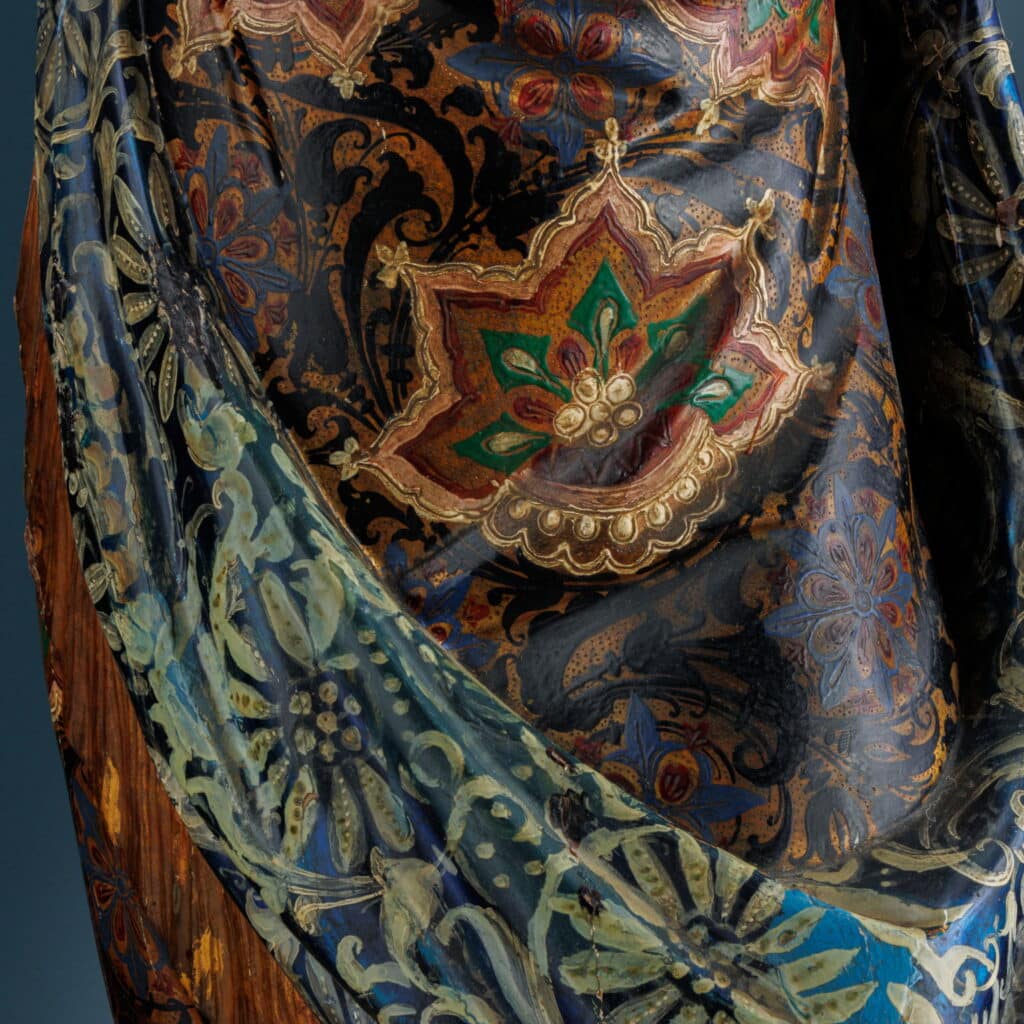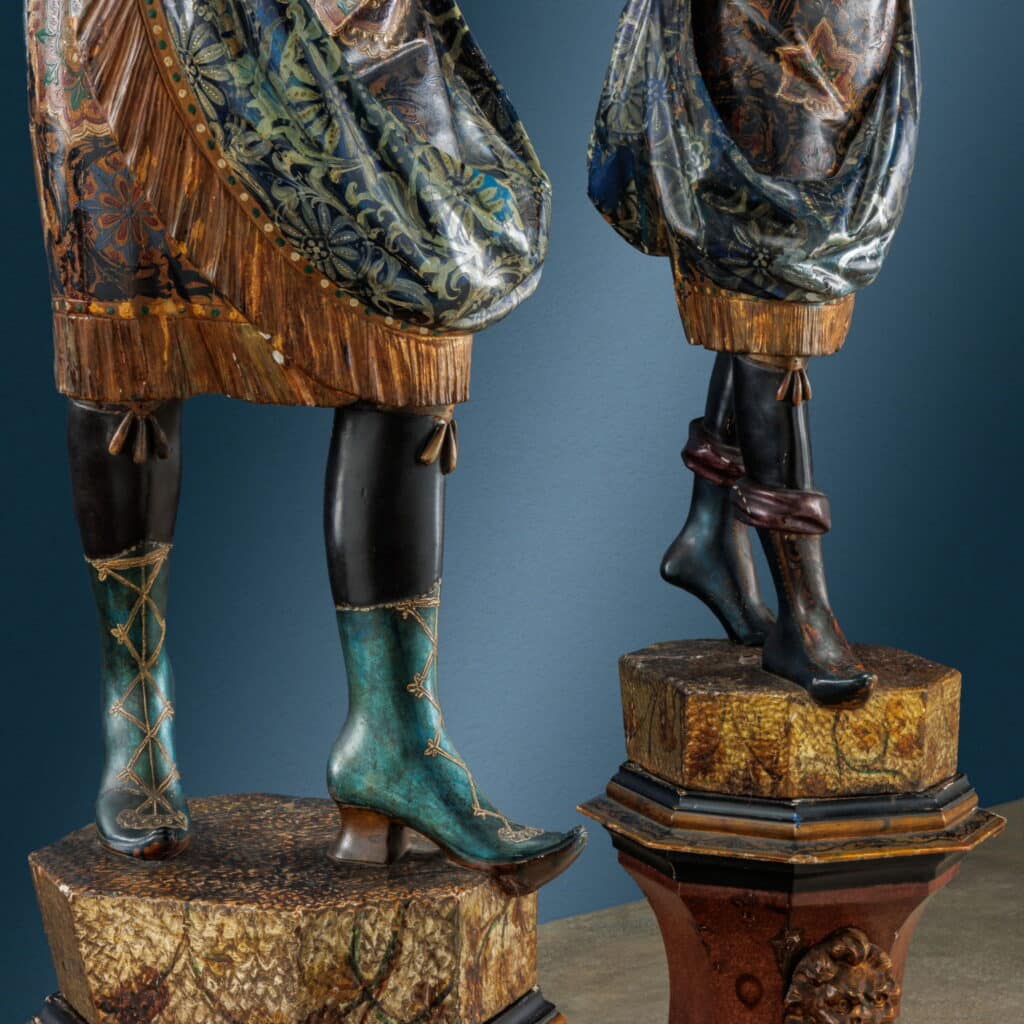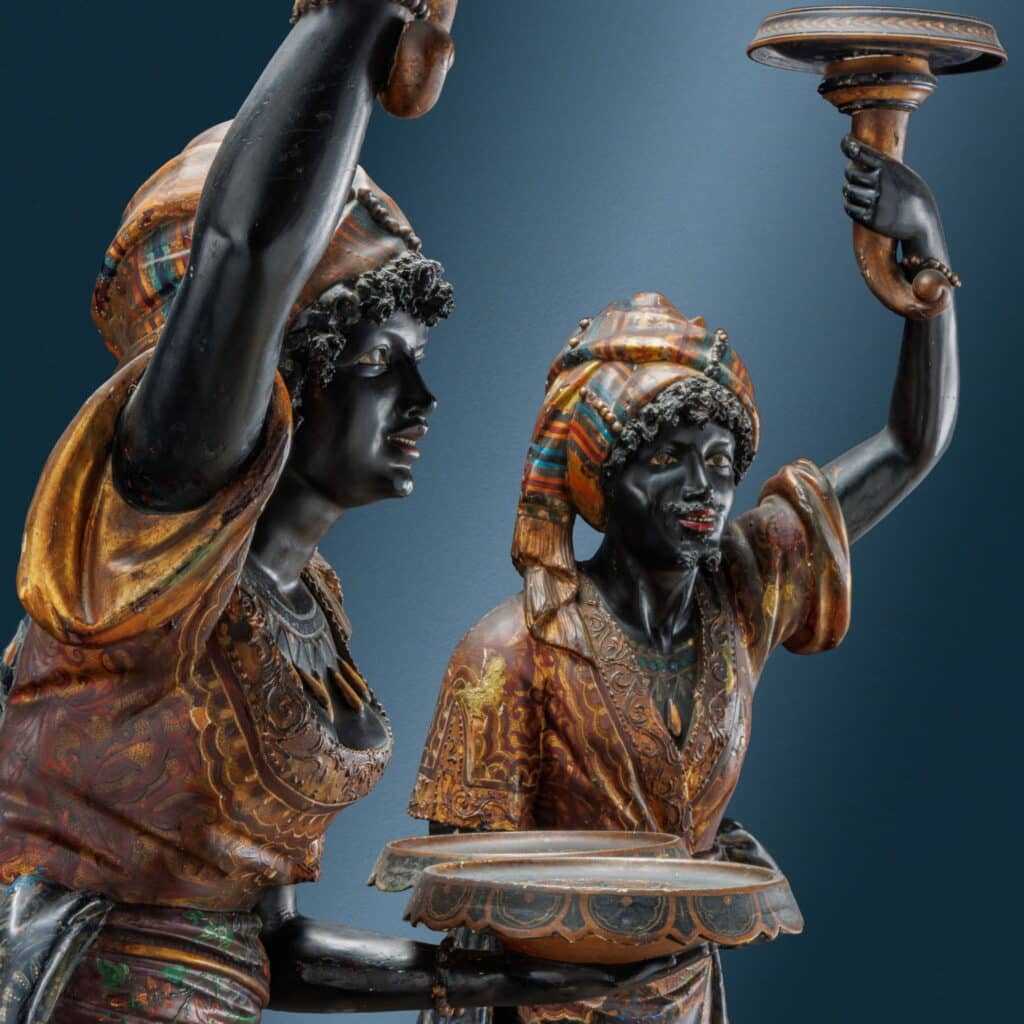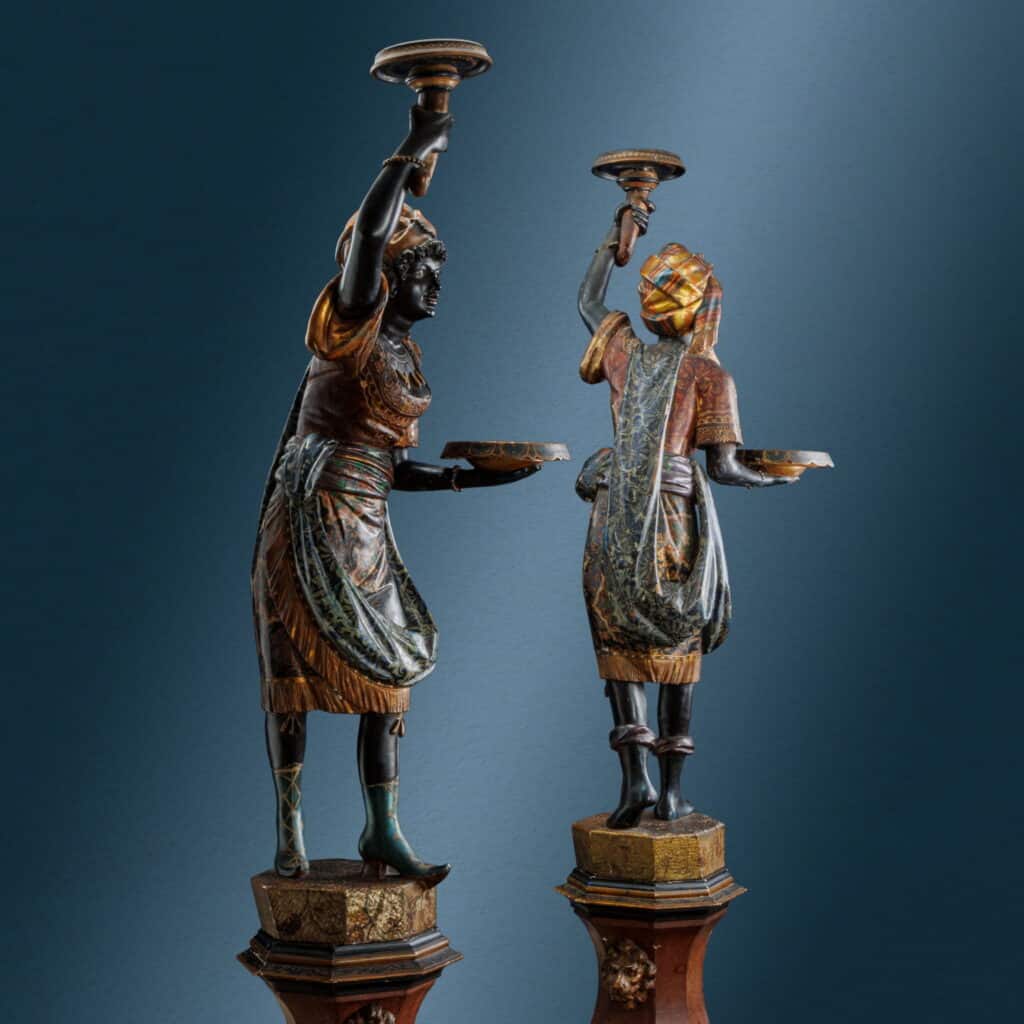Pair of Moors. Venice, Second Half of the XIX Century
Description:
Pair of torch-bearing sculptures depicting two Venetian Moors, one female and the other male. In a mirrored position, slightly forward, they hold a tray in one hand and in the other, raised above their heads, a cornucopia with a lamp-holding plate. They are dressed in characteristic robes with short skirts, draperies and turbans, decorated with oriental and exotic motifs.
They stand on octagonal and concave plinths, adorned with feral feet and lion heads.
Carved from swiss stone pine wood, they are lacquered in various shades of colour, while the robes embroidered by burin and partly gilded.
Dimensions: 223 x 61 x 60 cm (88 x 24 x 23 In)
CODE: ARARAR0222910
Historical-artistic analysis:
The portrayal of Moors was traditionally rooted in lagoon figurative culture, even before the ‘Michelangelo of wood’ Andrea Brustolon, whose works in the Ca’ Rezzonico Museum are undoubtedly worth mentioning, such as the armchairs of the Fornimento Venier, where Moors serve as the supporting structure of the legs and armrests, or the vase-holder with a nude, chained Moor.
Our pair of sculptures belongs to the production that spread in the second half of the 19th century, in the context of the revival of the stylistic currents of the past and particularly pertinent to what was called Neo-Baroque. The figures are in fact characterised by the pastiglia-shaped texture of the fabrics, an execution method typical of the period, as well as an exotic and oriental flavour in the decorations of the garments, clearly an expression of eclecticism, dictated by the heterogeneous figurative influences at the end of the 19th century. Several other specimens are known with which interesting comparisons are possible, such as the pair moors that hold a candelabra in the Museo d’Arti Applicate of the Castello Sforzesco. As mentioned in the catalogue entry, similar figures can be found in the mail order catalogue of the Sarfatti company, published in 1887. However, this was not the only firm that specialised in wood carving in the neo-Baroque style: the existance of the workshops of Valentino Besarel (1829-1902), Vincenzo Cadorin (1854-1925), Marco del Tedesco (active in 1887) and Francesco Taso (active in 1878) was well known those years.
Bibliography:
Claudio Paolini, Alessandra Ponte, Ornella Selvafolta, Il bello “ritrovato”. Gusto, ambienti, mobili dell’Ottocento, Novara, Istituto Geografico De Agostini, 1990;
Saul Levy, Il mobile veneziano del Settecento, v. II, Novara, Istituto Geografico De Agostini, 1996;
Enrico Colle, Museo d’Arti Applicate. Mobili e intagli, Milano, Electa, 1996.
Scultura lignea barocca nel Veneto, a cura di Anna Maria Spiazzi, Verona, Cariverona banca spa, 1997;
Clara Santini, Mille mobili veneti. L’arredo domestico in Veneto dal sec. XV al sec. XIX, Modena, Artioli editore, 2002.
- Pair of Moors. Venice, XIX Century

Antiques, Art and Design
FineArt is the new ambitious Di Mano in Mano project that offers an exclusive choice of antiques and design works, presenting them for their singularity and uniqueness.

